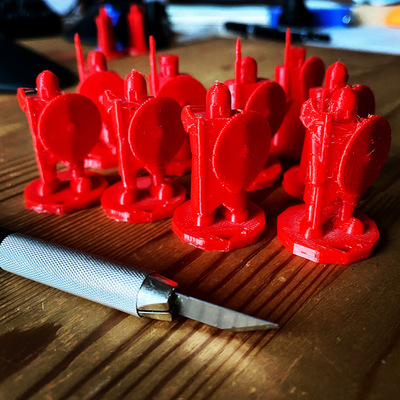
|
Empire of the Deceased Sun |
| 2021-11-11 |
Empire of the Deceased Sun
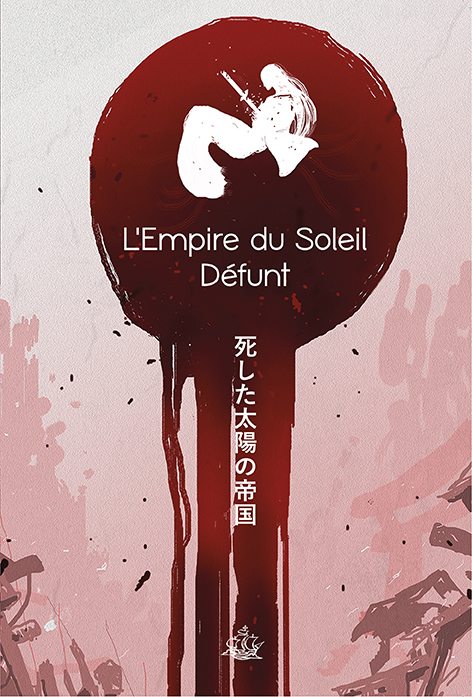
Japan is fascinating, it's being reinterpreted in many role-playing games. L'Empire du Soleil Défunt is one of these iterations, it comes in a small book of 44 pages, settings and rules. It's in French, but let me present it anyway.
6th of August 1652, earthquakes and thunderstorms greet the islands just before dawn. The sun that then rises is drenched in blood, its light is weak. Amaterasu, the sun goddess, has been assassinated by Mikaboshi. The other gods carry her bloodied body across the sky every day anyway. As the procession sets, night comes and the creatures of the darkness go on a rampage.
This is the Empire of the Deceased Sun. The player characters are all ninja of the Koga or Iga clans, allied with the Shogunate, they do thankless missions to protect the population and counter Mikaboshi and the other forces of darkness.
One interesting faction is lead by Toyotomi Hideyori's ghost, holding court in his Osaka castle and currently building a mixed army of humans and undead. Like if the Tokugawa toppling of the Toyotomi was rolling back into a different warring states period.
Not all seems lost, a golden shroud emanates from some of the humans linked with Amaterasu. The first among them is the Emperor in Kyōto. People and places with the golden shroud are avoided by the forces of darkness, and its soothing effects allow plants to grow (and food to be produced). Some people seemingly unrelated to the Imperial Family and Amaterasu are blessed with a golden shroud, some others hide theirs.
Human population gather in fortresses and those who can, consume themselves in the floating world. There's an uncertain tomorrow, and the night that precedes it is terrifying.
The setting takes 29 pages, presents the situation, lists the main cities of Japan and what they became, presents 8 central protagonists and 4 factions. That's not many brush strokes but it is efficient. A strong and creative gamemaster is required probably, but the invitation is enticing and the burden can be carried towards interesting destinations.
I find it intriguing that the 6th of August is also the day Hiroshima got its Little Boy in '45. In Empire of the Deceased Sun, Hiroshima, seat of the Asano clan since the Mōri clan was displaced, is doing better than other cities, the golden shroud of Itsukushima quiets the sea and fishing is possible.
Empire of the Deceased Sun was published in 2017. Its author, Aldo "Pénombre" Pappacoda, describes it as a pico game, a short format with a light system. Please note that Aldo is a friend of Olivier Sanfilippo of L'Empire des Cerisiers and that he wrote modules for his friend's game. I now feel like re-reading those Pappacoda modules to catch glimpses of the Deceased Sun in them.
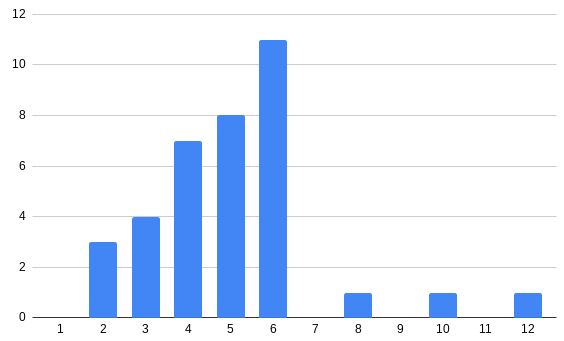
11 in 36 (30.56%) chances of getting a 6
Speaking of system, the game runs on the 2D+ System which is CC5.0 licensed (I couldn't find which CC variant that implies, and CC is currently at 4.0).
As somehow implied by its name, the system expects you to roll 2d6 and add some modifier. The highest of the result is kept. If the two dice give the same number, you simply double that number.
(Has someone already released a 2D han/chō system?)
But before modifiers are applied to the 2D, characteristics or skills have to be considered (and Speed for initiative).
A character has four characteristics, Act, Perceive, Consider, and Communicate. Upon creation, you assign a score of 3 to two of them and the two others get a score of 2.
There are also two attributes, Speed which is equal to Perceive plus Consider, and Health which is 25. Speed is used in combat for initiative, every participant rolls 2D and adds Speed, the highest goes first. Health is equivalent to hit points.
There are also 15 skills:
- Act → Athletics, Close Combat, Ranged Combat, Dodge, Ride, Endurance
- Perceive → Discretion, Orientation, Investigation, Vigilance
- Consider → Craft, Culture, Healing, Sabotage, Science, Will
- Communicate → Command, Disguise, Persuasion, Psychology
A character at creation has 5 skills at level 1 and 5 other skills at level 2.
In a characteristic roll, the score gets added to the 2D result, while in a skill roll, the score can be added to one (and only one of the dice). For example, you have Command at 3 and the 2D roll yields 3 and 5. You can add the 3 to the 5 and get a 8 (before modifier) OR add 2 to 3 and get two 5s for a final double at 10 (before modifier).
The text implies that you use characteristic or skill, not both. If the gamemaster asks for a Command roll to a character that has no score in this skill, then probably the simple parent Communicate value is used.
A character with a skill thus gets opportunities to "manufacture" double results.
The system has rolls against a difficulty target (see table here) or opposed rolls (for example, the classical Perceive/Discretion against Perceive/Vigilance).
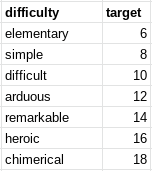
An attack roll is an opposed roll Act/x Combat against Act/Dodge (or Act/Close Combat when parrying with a weapon).
The damage is equal to 2D plus the attack success margin plus the weapon damage modifier (light weapons +2, regular weapons +3, etc) minus the armor damage modifier (samurai armor has 10 for example).
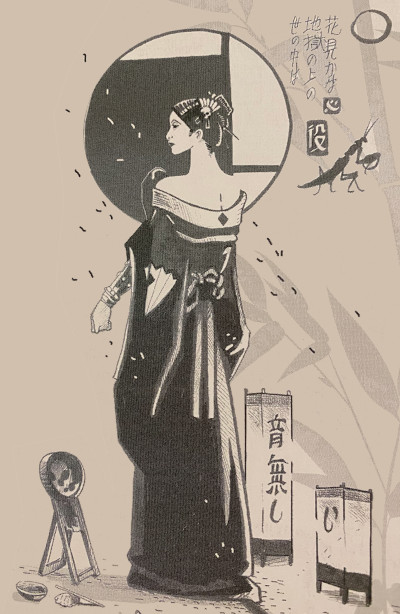
The Ninja player characters have ninjutsu techniques which resemble (light) 5th edition feats. Opposition characters and creatures have traits. A creature stat block is merely a list of those traits. A player character has 3 activations per technique, a good night of rest (no watch duty) resets the activations back to 3. Creature traits are either permanent or the creature has 3 activations per game session (major NPCs may get more).
Opposition creatures with the Frightening trait trigger a Consider/Will roll against 10. Fail the roll and you have to flee (and may roll again once under cover).
At the end of an adventure, the gamemaster grants 1 to 3 experience points. They can then be used to increase characteristics, skills, health points, learn a technique or gain an additional activation for a technique.
The gamemaster is free to set the modifiers on rolls, there is only one given by the rules, a -4 to Act and Perceive at night, but that can be mitigated by lighting and/or training.
The setting is short, but so full of possibilities. There is work, but probably very rewarding work. There are two pages about missions and long-term actions, they refocus the gamemasters on the fact that the player characters are ninja and work as leaves to networks that support ninja (and their covers).
The 2D+ system is intriguing, I wonder how the skill rolls work out, players probably always attempt to double. Since it is available under a CC license it could be lifted out to power another light game.
The catastrophe befalling the country probably washes away any harmony varnish and player characters may happily look for solutions on the side, they are ninja after all.
This game feels like a jewel.
